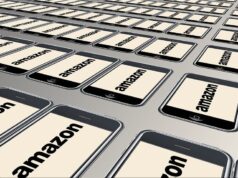Nowadays companies follow a proactive approach. In the sense, they are more bothered about customer demands than production. In fact, they won’t move forward with a particular product design if the public is not interested. This customer-centric approach won’t help companies all the time. Sometimes this becomes counterproductive for them. The hype would catapult the company’s initial sales, only to drop marginally following its inability to keep up with the hype. Here is a list of 10 inventions or innovative products that failed to make a mark despite being popularized by the masses.
1. 3D TV
Thanks to James Cameron’s “Avatar”, 3D Entertainment became a hot topic and a lot of people wanted a piece of this cutting edge technology. Overhyped prior to its release, 3D TV couldn’t find a proper place in people’s houses following the advent of 4K and curved display. Surprisingly, what was thought of as a brilliant tech, quickly went outdated by 2017. Major consumer electronic companies like Samsung, LG and Sony dropped 3D tech. As of now, there are only a few companies producing 3D TV, the rest of them are focussing on OLED, 4K and Curved display technology.
2. IBM PCjr
Often called as the “unwanted son of IBM PC”, IBM PCjr was a model that garnered a lot of interest prior to its release. After a successful launch of the Personal computer, IBM PCjr couldn’t stand a chance against Apple II. One of the main reasons for its failure was its performance. IBM PCjr was too underpowered for a price of $1300. Technology-wise, it was innovative. Jr came with a wireless infrared keyboard which was not feasible as ambient lightning would disrupt its working. There are rumours that IBM deliberately designed the model as the second best or third best. But, unfortunately, it was the second last in the worst models list.
3. LaserDisc
LaserDisc is the perfect example of a failed invention that couldn’t live up to the expectations of consumers. If you don’t know what a LaserDisc is, it looks like a Vinyl, and it promises to offer high-definition analog audio and video. Its lacklustre consumer acceptance is mainly because of its price and limited capacity. Before you could play a LaserDisc, you have to purchase a player, which costs around $800 at that time. Once you’ve bought the set, the next purchase is a movie, which costs around $40. However, the biggest disadvantage of LaserDisc is its limited capacity. It can hold only 60 minutes of video per side, and people were not happy to change sides while watching an important scene in the movie. Furthermore, the VHS rental market sidelined this format, and it could only sell well in Japan and some parts of Asia.
4.Google Glass
We were one step closer to the optical head-mounted display. Meaning, we could’ve matched with James Bond’s stealth. Jokes aside, Google’s smart glass is an epitome of commercial failure despite having a solid tech. When it was released in 2013, this $1500 eyewear couldn’t quite live up its expectations. Prior to its release, the product was marketed to let users take photos with a line of vision. However, the downside of the product was its safety and security. In just 2 years after its release, the product prototype was discontinued.
5. Segway
Segway’s NineBot S is a technological marvel that set a sales forecast of half a million units per year, only to sell 30,000 in 6 years. This self-balancing scooter promised to offer one of the most reliable means for personal commuting. However, due to many reasons, this technology couldn’t find a way to break into the market. One of those reasons was whether the scooter could be “legally used”. For instance, if you’re from the UK, you can’t drive a Segway. If you do so, you might be booked, as stated on the Highways Act of 1835. In addition to that, people were concerned about the vehicle’s safety after the news of Segway accidents surfaced on the internet. If you live under a rock, Segway’s owner, Jimi Heselden, was killed after a Segway accident.
6. Hoverboard
Same as Segway, Hoverboard couldn’t live up to our expectations. There’s a huge reason for that. Remember the hoverboard from the “Back to the future” series, well, this one is different from what was portrayed in the film. In addition to that, the product was not safe and it was hard to manoeuvre. In fact, the Consumer Product Safety Commission(CPSC) has issued safety guidelines, realising the dangers posed by the hoverboard. If you own one, it is better for you to play it safe and not take it to busy streets. The last thing you want is to blow up your hoverboard in the middle of the commute.
7. JooJoo
Tablets allowed you to get the royalty of using a computer system in your palm. Often called as “mini-computers” the hype for Tablets still persists, however, there are models that failed miserably despite this hype. The JooJoo Tablet launched in 2008 is one of such models. With a Linux-based operating system, JooJoo was released by Singaporean development studio Fusion Garage. There are a number of reasons for this product’s failure. The most important one being its UI. Its interface was clumsy and the software was not powerful enough. Prior to its release, the company boasted the biggest app store, which only had a bunch of websites.
8. Nokia N-Gage
Nokia’s entry to the gaming market couldn’t get much worse than this. Their blend of smartphone and handheld gaming console received a lot of backlashes. Released in 2003, the device had a lot of inherent shortcomings including its lack of having enough games. If you have an N-Gage then you would probably know the limited number of games offered. In short, it didn’t receive enough support that the Gameboy had. Furthermore, the device had a price tag of around $350. Nintendo’s tough competition, too, had a huge impact on N-Gage’s sales. Subsequently, Nokia was only able to sell 3 million of them in 4 years.
9. Samsung Galaxy Note 7
Samsung could have made a huge impact on its sales if they had built their Galaxy Note 7 better. Released in the same year as of iPhone 7, Samsung could’ve banked on Apple’s decline but it was the other way around. A manufacturing defect in Note 7’s battery led to overheating. This little defect cost the company $17 Billion in international recalls. If it wasn’t for its poor battery, the smartphone could’ve been a game-changer. But unfortunate for Samsung, Apple’s iPhone 7 took off making it hard for Note 7 to catch up.
10. Apple Newton
Newton is one of the biggest commercial and marketing failures of Apple Inc. If you haven’t heard of Newton, it is a Personal Digital Assistant(PDA) released in the year 1993. This handheld device would digitize your handwritten text. Unfortunately, this digitisation process wasn’t accurate. Despite forecasting a 1 million sales target, Apple was only able to sell 50,000 in the first 3 months.










